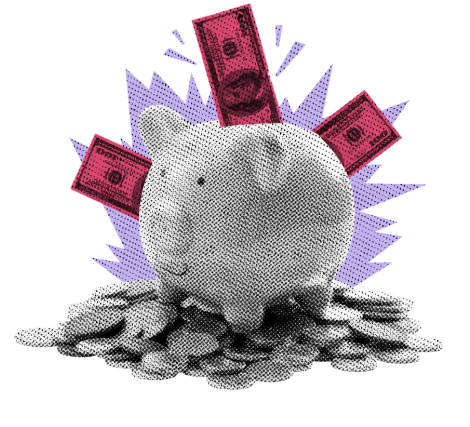Stimulus, Debt, and Inflation: A Sneak Peek Into Next Year’s Economic Rollercoaster

This week’s government funding debacle highlights key issues for 2025: rising debt, sticky inflation, and the market's reaction to bold fiscal policies. Read more here.
Second verse, same as the first. I have been working really hard this December. It is not surprising given how hard I have worked all year. For the record, I love working hard, so don’t in any way misconstrue this as a complaint. The point is, I have been so busy in a month that is typically calm for Wall Street, that I thought that I lost track of time. I had to go to my calendar and make sure that it was still December 2024, because based on the headlines and the market, I would have thought it was sometime after January 20th, 2025—you know, inauguration day.
In a rare feat, lawmakers on Capitol Hill had, out of the public eye, negotiated a stopgap measure to keep the Government funded through March. Who was even paying attention to that? It’s the holidays and this week’s floundering Fed announcement and all the speculation around really sucked all the oxygen out of the room. The elections are behind us, and we are all settling in, waiting to see what emerges next month when Trump 2.0 takes over the reigns again. I would say that the market has high hopes for what Trump will do for businesses and the economy. You don’t have to be a genius to know that; you just have to look at the second to last chart in my daily chartbook. Go on check it out; it’s worth it.
Well, apparently President-elect Trump and his advisor Elon Musk were paying attention to the lower chamber. They decided to weigh in on the package that was expected to be passed, and their opinion completely scuttled the proceedings. This put the budget on the radar of Wall Street. I should say the near-term radar. The Federal Budget and the swelling debt used to keep it moving forward is very much on Wall Street’s mind, just not until… well, January 21st when we get our first glimpse of Trump with his trademark Sharpie marker in hand.
But, alas, we now get an early glimpse of what things may be like, post-inauguration, as Trump’s guidance on the temporary funding bill sent lawmakers into a frenzy to negotiate and create a new package to conform to Trump’s wishes. Why rush? Well, because the Government will run out of money tonight and a partial shutdown will occur if a consensus is not reached. The good news is that lawmakers were able to come up with a compromise. Unfortunately, though, that new budget failed to garner enough votes to pass, WHILE YOU SLEPT, and we are now, once again on the brink of a shutdown.
Let’s take a step back. Wall Street is very concerned about the growing deficit. It is big, and based on some of the incoming administration’s plans, it seems like it is going to get a lot bigger. That means that the Treasury will have to borrow more money in the future, adding to the already swollen national debt. More supply of that debt will push prices of bonds down causing yields to go higher. You know what else causes yields to go higher? Inflation—as if you didn’t know. Many of Trump’s agenda items are expected to exacerbate the still sticky inflation situation. Enter the bond vigilantes, who were instrumental in pushing the yields higher earlier in the year. They were taking a coffee break but returned earlier in the week to do their thing, and their thing is to sell bonds and push yields higher.
None of this should be news to you. Nobody likes a volatile stock market going into the final days of the year, especially one which has done quite well to date. But here we are with the VIX Index trading at 25-ish (considered volatile), which is almost 100% higher than it was just a few weeks ago… er, last week. Folks, this market behavior is a public service announcement to help us get a handle of what we can expect in 2025, and probably beyond.
I like stimulus! It helps the economy grow which helps stocks go higher, and we all want stocks to go higher. However, stimulus is not free. There truly is no free lunch on Wall Street. Stimulus costs money which increases the national debt. Is that bad? Well, there is a lot of debate around that topic, and I can assure you that none of it is conclusive, but as a practical matter, more debt is not good, or at least it should be accumulated responsibly.
There is another cost to stimulus in that it distorts the natural economic feedback mechanisms which keep things in check. If you don’t believe me on this, just look back on how the last stimulus package electrified inflation to life in 2021. The stimulus caused demand to increase unnaturally. The feedback mechanism of higher prices is supposed to suppress demand and bring things back to equilibrium, but until that happens, we, consumers, simply have to suffer inflation. Now, the Fed has joined in by raising interest rates to speed up that process. It does that by adding to inflation through increasing the cost of borrowing. Weird, right? Look, we are in an inflation correction cycle. It will happen, it just takes time, and unfortunately, it is a painful process.
This next year is going to be dominated by the wrestling match between measures to stimulate the economy and the costs of doing so, and the markets will be the judges, sitting on the side of the ring, expressing excitement and disappointment as the match plays out. I almost forgot, there is a proposed solution to minimize the growing deficit and pay for those great proposed stimuli. DOGE! The ominous DOGE is going to find ways to cut spending in the Government. That seems responsible, reasonable, and even necessary. It is a stimulus in and of itself! But wait, that comes at a cost as well. Did you know that around 17% of GDP comes from Government spending? The Government contributes around the same amount to GDP as companies, and the remainder comes from consumers. The point here is that while cutting Government spending may solve one problem, it may cause another one altogether.
Do you want to know what to expect in 2025? Just look back on this past week, and you'll have a good handle on it. So, no, it is not 2025 yet and the Biden administration is still in the White House, though they may be more focused on packing at the moment. It is still not too late for lawmakers to come up with a solution to the challenge at hand. I am confident that they will… at some point, as they had in the three shutdowns that happened during Trump’s first time in office.
YESTERDAY’S MARKETS
Stock indexes could not maintain early gains, but for the Dow which managed a slightly positive close, breaking a losing streak record dating back to the early 1970s. Still sore from the prior day’s violent, negative reaction to the Fed’s guidance, traders were easily whipped into an anxious state by congression budget shenanigans, clearing out another layer of fearful investors looking to keep their ’24 gains. Bond yields continued their relentless climb adding to stock trader apprehension.

NEXT UP
- Personal Income (November) is expected to have increased by 0.4% after gaining by 0.6% in October.
- Personal Spending (November) is expected to come in with a 0.5% gain after it rose by 0.4% in the prior period.
- PCE Price Index (November) may have ticked up to 2.5% from 2.3%.
- Next week we will get more housing numbers, Consumer Confidence, and… HAPPY HOLIDAYS! Don’t be lazy, the markets are still open, so check in on Monday for your weekly calendars.
DOWNLOAD MY DAILY CHARTBOOK HERE 📊
.png)

